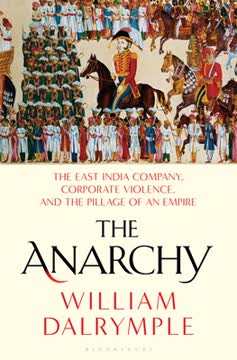Key Takeaways
1. Economic inequality in Britain is intensifying, creating a new class structure
The collective accumulation of wealth over the past three decades is therefore enormous, and testifies to the massive accentuation of the sheer volume of economic capital in British society.
Wealth concentration. Britain has experienced a dramatic increase in economic inequality over recent decades. The total amount of personal wealth has tripled since 1980, while the proportion of wealth as a percentage of GDP has doubled. This absolute increase in wealth has widened the gap between the rich and poor, making it more difficult for those starting with no wealth to climb the economic ladder.
Income disparities. Income inequality in the UK is among the highest in developed nations. The top 10% of income earners make nearly 17 times more than the lowest 10%, while the top 1% earns 124 times more than the poorest 1%. This stark divide is not fully explained by occupational differences, as even within the highest-paid occupational classes, there are significant income variations.
Property and age factors. Housing wealth has become a major component of economic capital, creating a divide between property owners and renters. This trend disproportionately affects younger generations, who struggle to get on the property ladder. The geographical distribution of property values further reinforces economic disparities, with London and the southeast of England experiencing significantly higher property values than other regions.
2. Cultural capital evolves: From highbrow to emerging forms
We are witnessing the rise of a kind of 'hip' (or hipster) cultural capital associated with younger people. It too has its own infrastructure – social media, and in the bar, club and sporting scene, and might also be seen to be institutionalized in new professional workplaces and lifestyles which emphasize the ability to be flexible and adaptable.
Shifting cultural landscape. Traditional highbrow cultural capital, associated with appreciation of classical arts and literature, is increasingly confined to older generations. A new form of "emerging" cultural capital is on the rise, particularly among younger, educated individuals. This new form values engagement with contemporary culture, social media, and a broader range of cultural experiences.
Cultural omnivores. The new cultural elite are not defined by exclusive highbrow tastes, but rather by their ability to appreciate and engage with a wide range of cultural forms. This cultural omnivorousness is characterized by:
- Eclectic tastes spanning both high and popular culture
- A discerning and critical approach to cultural consumption
- The ability to justify and explain cultural preferences
New forms of distinction. While appearing more egalitarian, this emerging cultural capital still creates subtle hierarchies. The key distinction lies not in what is consumed, but in how it is consumed and discussed. This creates a new form of cultural snobbery based on:
- Demonstrating knowledge across diverse cultural fields
- Ability to make nuanced judgments and critiques
- Displaying a detached, ironic appreciation of popular culture
3. Social networks shape opportunities and reinforce class divisions
Bourdieu's concept of social capital is different from Putnam's view, however. Rather than seeing social networking as benefiting society in general, he sees it as a means of allowing the privileged and powerful to use their connections to help each other and protect their interests – and thereby shut out those who lack such social capital.
Network inequality. Social capital, or the resources embedded in one's social networks, is unequally distributed across society. Those in higher social positions tend to have more extensive and diverse networks, providing them with greater access to information, opportunities, and resources.
Strength of weak ties. While close relationships are important, research shows that "weak ties" – acquaintances and less intimate connections – often provide the most valuable resources in terms of career advancement and access to opportunities. This phenomenon can reinforce class advantages, as those in privileged positions are more likely to have weak ties to other influential individuals.
Occupational clustering. The GBCS research reveals patterns in social connections based on occupation. People are more likely to know others in similar or adjacent occupational categories, creating "clusters" of social capital. This clustering can limit social mobility and reinforce existing class structures by:
- Concentrating information and opportunities within certain social circles
- Creating barriers for those outside these networks to access resources
- Perpetuating shared cultural norms and expectations within class groups
4. The elite class consolidates advantages through economic, cultural, and social capital
Those with the highest levels of economic capital are not only very well off – but they also seem to have distinctive social and cultural characteristics too. Being very well off is also associated with having more exclusive networks, being much more likely to think of themselves as upper-middle or upper class, and being more likely to come from advantaged class backgrounds.
Multidimensional advantage. The elite class in Britain is characterized by the accumulation and integration of three forms of capital:
- Economic capital: High incomes, substantial savings, and valuable property
- Cultural capital: Both highbrow and emerging cultural knowledge and tastes
- Social capital: Extensive networks including other high-status individuals
Intergenerational transmission. The elite are more likely to come from privileged backgrounds, highlighting the role of inherited advantage. This includes not only direct financial inheritance but also the passing on of cultural knowledge, social connections, and educational opportunities.
Self-awareness and distinction. Members of the elite class are more likely to:
- Identify themselves as upper or upper-middle class
- Have confidence in their cultural tastes and judgments
- Possess exclusive social networks, including connections to other elites
- Display both traditional highbrow culture and emerging cultural capital
This combination of capitals allows the elite to maintain and reproduce their advantaged position across generations, creating barriers for social mobility.
5. The precariat: A new disadvantaged class struggles with insecurity
It is partly for this reason that we might be inclined to place the key economic division, not between manual and non-manual workers – as with the classic middle/working class divide – but between a smaller group of the 'precariat' at the bottom of the scale, whose paucity of economic capital and their frequent reliance on rented housing is a defining feature of their insecurity and disadvantage and prevents any realistic prospect of getting on to the housing ladder.
Defining the precariat. The precariat represents a new disadvantaged class characterized by:
- Insecure employment: Temporary, part-time, or zero-hours contracts
- Limited economic capital: Low incomes, minimal savings, and no property assets
- Restricted access to social benefits and protections
- Lack of occupational identity or career prospects
Housing insecurity. A key feature of the precariat is their exclusion from property ownership. This creates a stark divide between them and other classes, as they:
- Face rising rental costs without building equity
- Have limited housing stability and security
- Miss out on the wealth accumulation associated with property ownership
Limited capitals. The precariat often lacks not just economic capital, but also:
- Cultural capital: Less likely to engage in "legitimate" cultural activities
- Social capital: More limited and localized social networks
- Symbolic capital: Lack of recognized qualifications or status
This multidimensional disadvantage makes it extremely difficult for members of the precariat to improve their class position, perpetuating a cycle of insecurity and inequality.
6. Education and geography play crucial roles in class formation
We can readily identify the stakes and tensions this history produced. For some people, the working classes were a dangerous force of commoners who would drag down standards and lead to social and cultural decline if they were allowed too much influence. Yet for socialists and those active in the Labour movement, the working classes spearheaded a more egalitarian and caring ethos, which in its turn would bring about a more genuine nation, one able to move beyond the hypocrisies of upper-class gentlemanly culture.
Educational divide. Education has become a key factor in class formation and social mobility:
- University education is increasingly necessary for accessing higher-status occupations
- Educational institutions play a role in transmitting cultural capital
- The type and prestige of educational institutions attended can impact future opportunities
Geographical inequalities. Class divisions are increasingly mapped onto geographical space:
- Stark differences in property values between regions, especially London and the Southeast versus the rest of the UK
- Concentration of high-paying jobs and cultural amenities in certain urban areas
- "Postcode lottery" effect on access to quality education and public services
Intersecting factors. Education and geography interact to reinforce class divisions:
- Top universities are concentrated in certain regions
- Access to cultural institutions and experiences varies by location
- Local economic conditions impact educational and career opportunities
These patterns create self-reinforcing cycles of advantage and disadvantage tied to both educational attainment and geographical location.
7. Class consciousness persists, but manifests in subtle new forms of snobbery
Snobbery is therefore being redrawn alongside cultural capital itself. As forms of culture which used to be restricted to the educated middle classes actually filter down to wider sections of the population, the dividing lines are being redrawn so that it is how specific cultural activities are enjoyed which matters.
Evolving class awareness. While traditional class identities have weakened, class consciousness persists in new forms:
- People are often reluctant to explicitly identify with a class
- There's greater awareness of the multidimensional nature of class (beyond just income)
- Subtle cues and judgments based on cultural tastes and consumption patterns
New forms of distinction. Modern class snobbery operates through more nuanced mechanisms:
- Emphasis on how culture is consumed rather than what is consumed
- Valuing of "omnivorous" tastes and cultural flexibility
- Judgments based on perceived "authenticity" and discernment
Disavowal of snobbery. Paradoxically, explicit snobbery is now seen as distasteful, leading to:
- Claims of open-mindedness and cultural eclecticism
- Judgments framed in terms of personal choice rather than class
- Subtle boundary-drawing through cultural knowledge and consumption practices
This new landscape of class distinction creates challenges for social mobility, as the "rules of the game" become less explicit but no less powerful in shaping opportunities and social boundaries.
Last updated:
Review Summary
Social Class in the 21st Century is praised for its accessible analysis of contemporary British class structure. Readers appreciate its use of survey data to redefine class categories beyond traditional working/middle/upper divisions. The book's exploration of cultural capital and emerging class markers resonates with many. Some criticize its focus on obvious conclusions or lack of depth in certain areas. Overall, it's viewed as a thought-provoking introduction to modern class dynamics, though primarily focused on the UK context.
Pelican Books Series Series
Similar Books





Download PDF
Download EPUB
.epub digital book format is ideal for reading ebooks on phones, tablets, and e-readers.






